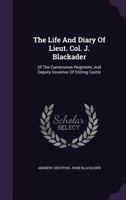British Bees: an Introduction to the Study of the Natural History and Economy of the Bees Indigenous to the British Isles
Select Format
Select Condition 
Book Overview
No Synopsis Available.
Format:Paperback
Language:English
ISBN:1014220262
ISBN13:9781014220264
Release Date:September 2021
Publisher:Legare Street Press
Length:478 Pages
Weight:1.46 lbs.
Dimensions:1.0" x 6.1" x 9.2"
Related Subjects
Child Psychology Children's Books Criminology Education & Reference Health, Fitness & Dieting Health, Fitness & Dieting History National Politics & Government Politics & Social Sciences Psychology & Counseling Schools & Teaching Social Issues Social Science Social Sciences Social Theory Teen & Young Adult Violence in Society WorldMore by Andrew Crichton
Customer Reviews
5 customer ratings | 5 reviews
There are currently no reviews. Be the first to review this work.











































